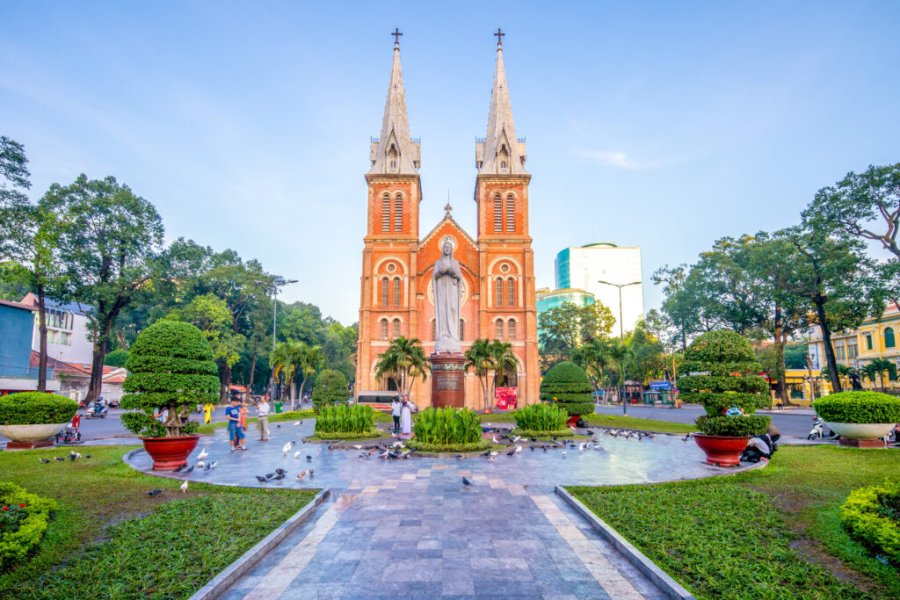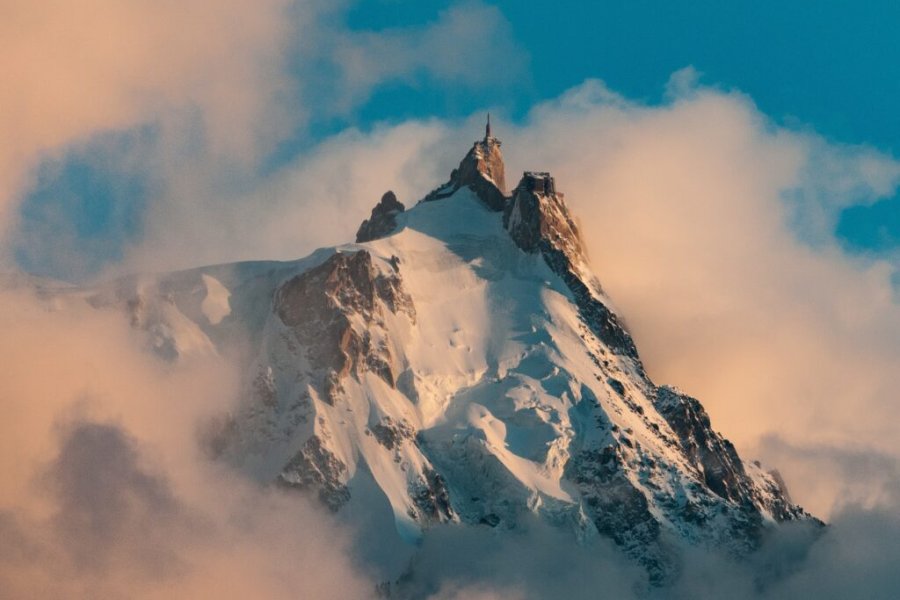Rajasthan and the Festival of Colors in India 2025 tour
Experience the colors of India during the Holi festival of colors. It's a festival with a spirit of collective sharing and an explosion of chromatic joy, reconnecting with celebration as an exorcism of fear of the other. On this day, castes no longer exist, everyone is the equal of the other. Colors have their own meanings: green for prosperity, pink for joy, yellow for friendship, blue for vitality, orange for optimism.
Cities to visit: Delhi - Mandawa - Bikaner - Jaisalmer - Jodhpur - Ranakpur - Udaipur - Chittorgarh - Pushkar - Jaipur - Agra - Delhi
Date of the Festival of Colors in 2025: March 15, 2025
Highlights of the trip
During your stay you can enjoy the following highlights: Culture / Heritage, Discovery, Luxury Travel, LGBTQ+, Local stay.
Best months to go
The best time(s) to go is/are : Mars.
How to get there?
You can get there by Plane.
VOYAGE IN INDIA
From 1199€ à 1899€ / person
Travel suitable for :
Detail of the stay : Rajasthan and the Festival of Colors in India 2025 tour - 15 days
march 3. 2025
Arrival in the morning or evening at Delhi airport terminal 3. Welcome to India by our representative, then transfer to your hotel.
march 4. 2025
Steps: Mandawa
Departure for the Shekhawati region, famous for its havelis. Havelis are mansions decorated with frescoes and various motifs, once owned by wealthy merchants trading on the silk route between the Indus Valley and Central Asia. Installation in the village of Mandawa, the former haveli of a noble family in this village, a truly charming building. Departure to visit the havelis of Mandawa.
march 5, 2025
Steps: Bikaner
Departure for Bikaner. On the way, visit the Nadine Le Prince haveli, restored to its original state by a French artist. Settle in Bikaner, the city founded by King Rao Bika in the 15th century on the edge of the Thar Desert. Installation in Bikaner. Visit to Junagarh Fort, an impressive fort that used to be called Chintamani but was renamed Junagarh in the 20th century, meaning the old fort. It's one of the few forts in the region not to be built on a hill, but on the plain. So you can reach it on foot rather than by elephant. The fort was built by the prime minister of Raja Rai Singhji, the governor of Bikaner, who ruled between 1571 and 1611. Then visit the Bandeshwari Jain temple and the old town. In the evening, visit the markets of Bikaner city (possibility of visiting the Rat Temple at Desnoke)
march 6. 2025
Steps: Jaisalmer
Departure for Jaisalmer. En route to the temple of Baba Ramdeo, a local saint of the Marwar region. Settle in Jaisalmer. At the end of the day, visit the Bada Bagh (royal cenotaphs) at sunset. Free evening at your hotel
march 7. 2025
Steps: Jaisalmer
Visit to the Golden Fort (Sonar Kila), also known as the Carcassonne of India, erected in 1156 by the Rajput-Jaisal ruler, Patwa-ki-Haveli, Salim Singh-ki-Haveli, Nathmal-ki-Haveli and the Jain citadel temple. Departure for a camel or jeep ride in the Thar desert (Khuri village, 40 km from town). Evening entertainment by Rajasthani gypsies with traditional music and dance, followed by dinner. Return to Jaisalmer.
march 8. 2025
Steps: Jodhpur
Departure for Jodhpur. On the way, visit to the Hindu temples in the village of Osiyan. Settle in Jodhpur. Visit to the Mehrangarh fortress, nicknamed the "magnificent fort", towering 122 meters above the city. Inside is a richly decorated palace. Visit the JaswantThada memorial to Maharaja Jaswant Singh II, built in 1899. This monument is built entirely of finely sculpted and polished white marble. In the evening, discover the "blue city" and its spice merchants
march 9. 2025
Steps: Udaipur
Departure for Udaipur. On the way, visit the Chaumukha Mandir Jain temple in Ranakpur, one of the five major Jain pilgrimages. Dating back to the 15th century, the structure comprises 29 white marble halls, every inch of which is meticulously carved and ornamented. The temple is also known as the "Temple of Four Faces", as the cella houses a four-faced Tîrthankara (sculpture of Jain masters who have been deified) looking towards the four cardinal points. The building is said to have a total of 1,444 pillars, all carved with different ornamentation. Installation in Udaipur. In the evening, traditional Rajasthani dance and puppet show at Bagoreki Haveli.
march 10. 2025
Steps: Udaipur
Udaipur, also known as "The Venice of the East", is Rajasthan's most romantic setting, with its many lakes and magnificent palaces. Visit the City Palace (a complex of palaces built in 1559 by Maharana Udai Singh as the main palace of the Sisodia Rajput dynasty), and the Hindu temple Temple Jagdish. Then a visit to Udaipur's city markets. In the evening, boat trip on Lake Pichola.
march 11. 2025
Steps: Pushkar
Departure for Pushkar. On the way, visit to Chittorgarh Fort, India's largest fort. It bears traces of three Muslim invasions and bears witness to the pride of the Rajput warriors. Continuing on to Pushkar, a small town nestling around a sacred lake, which sprang up where Brahma, Hindu God the Creator, is said to have dropped a lotus flower. In the 1970s, it was an important stopping-off point for hippies from all over the world. Today, Pushkar is a major pilgrimage site for Hindus, with 400 temples and 52 ghats around the sacred lake. Installation in Pushkar. Visit to the sacred lake and its many temples, including one dedicated to Brahma. Evening discovery of Pushkar's markets.
march 12. 2025
Steps: Jaipur
Departure for Jaipur. Installation in Jaipur. Jaipur, capital of Rajasthan, founded by the astronomer King Jai Singh II between 1688 and 1743. Visit the Palace of the Winds (Hawa Mahal) from the outside. Visit the bazaars of the "Pink City". In the evening, explore the old town, also known as the "Pink City", and visit the Laxminarayan temple.
march 13. 2025
Steps: Jaipur
Departure for Amber Fort. Ride up to the fort on an elephant, then visit this fortified palace which was the citadel of the Kachhwaha dynasty until 1727, when the capital was transferred to Jaipur. Successive rulers continued to visit for special occasions, seeking the blessing of the family goddess, ShilaDevi. The citadel was founded under the orders of Man Singh I in 1592, on the ruins of an old 11th-century fort, but it is the various buildings added by Jai Singh I that form the magnificent central body. In the afternoon, visit the Astronomical Observatory (JantarMantar) and the City Palace (the palace of the King of Jaipur). In the late afternoon, discover the bazaars of the pink city of Jaipur.
march 14. 2025
A day dedicated to the HOLI Festival of Colors, the Festival of Colors is a Hindu religious festival marking the end of winter and the beginning of spring. It is celebrated during the full moon of the month of Phâlguna (February-March) for two days. It's a festival with a spirit of collective sharing and an explosion of chromatic joy, reconnecting with celebration as an exorcism of fear of the Other. In India, this festival is a symbol of friendship towards others. Everywhere in the streets, people dance and parade with colored powders (Gulal), which they smear on each other as they dance and sing. On this day, castes no longer exist, everyone is the equal of the other. Colors are their signifiers: green for prosperity, pink for joy, yellow for friendship, blue for vitality, orange for optimism.
The day's program:
After breakfast, departure to celebrate Holi with an Indian family. On arrival, you'll be given your traditional white clothes (Kurta - Pyjamas, Indian cotton pants and tunic). The colored powders (Gulal) will be at your disposal, so that you and your family can share in the joy of this festival of friendship and sharing. You'll dance to Bollywood and local music. Around midday, enjoy a tasting of Rajasthani sweet and savoury specialities. Late afternoon return to your hotel and free time.
march 15, 2025
Steps: Agra
Departure for Agra. On the way, visit the fortified city of Fatehpur Sikri. It was the imperial capital of the Mughal Empire from 1571 to 1584. Built by Emperor Akbar and perfectly preserved since its abandonment, it is a remarkable testimony to 16th-century Indo-Islamic architecture. Installation in Agra. Late afternoon visit to the Taj Mahal at sunset, one of the Seven Wonders of the World. Built at the request of the Mughal Emperor Shah Jahan as a tribute to his beloved, its construction involved over 20,000 workers and craftsmen from all over the world. In the evening, visit Agra's bazaars.
march 16, 2025
Morning visit to Agra Fort, one of the finest Mughal-style forts built in 1565 by Akbar and enlarged by his grandson Shah Jahan. Then visit the tomb of Itmatudualla, also known as the mini Taj Mahal. Departure for Delhi. Check-in at hotel and evening at leisure.
march 17, 2025
Departure for a visit to the BanglaSaheb Sikh temple, built in the 18th century in memory of the visit of the eighth Guru Harkrishan in 1664. At mealtimes, devotees sit on the floor in rows, and volunteers serve them dal and chapati. This communal meal symbolizes the unity of the community and the theoretical absence of the notion of caste. Then visit India's largest mosque, the JamaMasjid, and the bustling markets of ChandniChowk. Visit Humayun's Tomb, the tomb of India's second Mogul Emperor, which inspired the architecture of the Taj Mahal. In the late afternoon, visit IndiaGate (from the outside), a memorial to the Indian soldiers who died in the First World War in the Indo-British army and the Anglo-Afghan wars. In the evening transfer to the international airport for your return flight.







